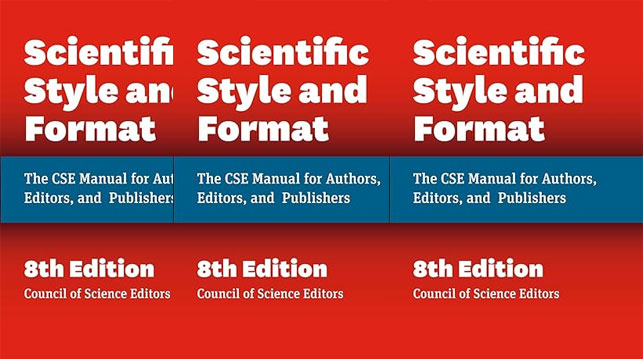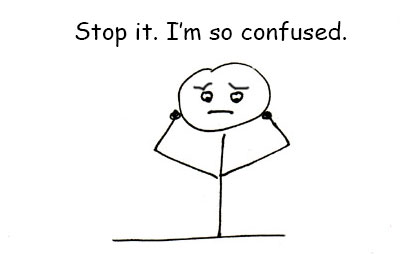
Last time on Referencing Style Theatre, we examined the Vancouver referencing style used by many medical journals.
This time, let’s dive into a different style used by another corner of academia: the physical sciences.
What Is CSE Referencing?
The physical sciences (e.g., physics, chemistry, genetics, biological sciences, astronomy) often rely on CSE referencing, a style created and updated by the Council of Scientific Editors.
The CSE style can be adapted to suit the guidelines of specific fields or journals. That means that you must always check with the target journal, your professor, or whomever you’re submitting the final paper to to ensure that you follow the sub-style they prefer.
Citations in CSE style can adhere to one of three varieties.
Get a free sample proofread and edit for your CSE referencing.
Two professional proofreaders will proofread and edit your CSE referencing.
Citation-Sequence
In citation-sequence referencing, you’ll include citations in the text by using numbers within brackets, such as [1]. Each of these numbers then corresponds to that number in your bibliography. All you have to do is create a numbered list on your reference page and go down the line, recording each reference in the order you cited it in the text.
Citation-Name
Citation-name referencing is also straightforward. In this style, your reference page is formatted alphabetically and sorted by the last name of the cited publication’s primary author, just like in APA style. You’ll then create a numbered list from this alphabetical list, so you’d see something like the following:
1. Aaron
2. Beaujohn
The difference comes up in the main text of the manuscript when citing all those references. You’ll use the number that corresponds to the number of the alphabetized reference entry, regardless of where in the main text the citation appears.
For instance, you might cite Beaujohn before Aaron in the text, meaning that [2] appears before [1] as in the following:
Name-Year
Finally, we have name-year referencing, which is basically identical to APA style. Here, you organize your reference list alphabetically by primary author’s last name, then follow that with the year.
CSE Referencing Examples
Now that we’ve seen the three systems used to organize your reference page entries, let’s look at how to format those entries in the text and bibliography. The Citation-Sequence and Citation-Name systems use a similar structure, whereas Name-Year is a little different.
Citation-Sequence and Citation-Name Bibliography Entries
To reference a journal using a CSE numbered citation style, use the following basic format in your bibliography:
Author(s). Article title. Journal title. Date;volume(issue):location.
Do not use periods after authors’ initials and do not include “and” or “&” in your reference. Article titles are formatted in sentence case, with only the first word and any proper nouns capitalized. Use the ISSN abbreviation for journal titles with no periods in the abbreviation.
So, for instance, you might have:
If there are more than ten authors, write out the first ten authors’ names and then “et al.”
To refer to this entry in the text, you’d use the appropriate numbered citation, in this case, [1]. No other information is necessary in the main text.

Note that some journals prefer the use of superscript numbers to bracketed references. You’ll want to check to be sure which is used by the journal or professor to whom you’re submitting. If superscript numbers are preferred, the above example would be cited like this.1
Need to cite a book? Just follow this basic information outline:
Author(s). Title. Edition. Place of publication: publisher; date. Extent. Notes.
“Notes,” in this case, refers to any essential information that will help a reader find what you’re talking about, such as a URL for an online book.
Once again, titles are formatted in sentence case, with only the first word and any proper nouns capitalized. Here’s an example of a CSE number-formatted book entry:
For a website, provide all the information you can find to allow others to replicate your search. Here’s the basic structure:
Title of Homepage. Edition. Place of publication: publisher; date of publication. Notes.
[date updated; date accessed]
If you can’t find the date of publication, use the website’s copyright date. If you can’t find that, include only the date updated (if available) and the date accessed. “Notes” here refers to the URL and any other pertinent information.
So you might see:
Name-Year Bibliography Entries
The only real difference in structuring a bibliography reference in the Name-Year system, compared to other CSE systems, is that where you place the date moves up to appear just after the authors’ names. So to reference a journal, use the following basic format:
Author(s). Date. Article title. Journal title. Volume(issue):location.
As with the numbered citation styles, do not use periods after authors’ initials and do not include “and” or “&” in your reference. Article titles are formatted in sentence case, with only the first word and any proper nouns capitalized. Use the ISSN abbreviation for journal titles with no periods in the abbreviation.
Going back to our earlier example, you’d have:
Aaron MR, Hoffman JG. 2001. Origin of perfect ice disks in New England rivers: Aliens or earth science? Earth Surf Process Landf. 62(11):1812–1817.
In the text, you would cite this reference as: (Aaron and Hoffman 2001).
See? The only difference on the reference page is where the date appears, while the difference in the text is the use of a written citation rather than a number.
Name-year referencing in CSE style is essentially identical to Harvard style. For more specific guidelines, check out our handy overview of Harvard referencing here.
So the next time you’ve got a physical sciences paper to put together, be sure to check which of the three CSE systems your editor prefers, and then get crackin’!
Kate S.
Get a free sample proofread and edit for your CSE referencing.
Two professional proofreaders will proofread and edit your CSE referencing.
Get a free sample proofread and edit for your document.
Two professional proofreaders will proofread and edit your document.
We will get your free sample back in three to six hours!